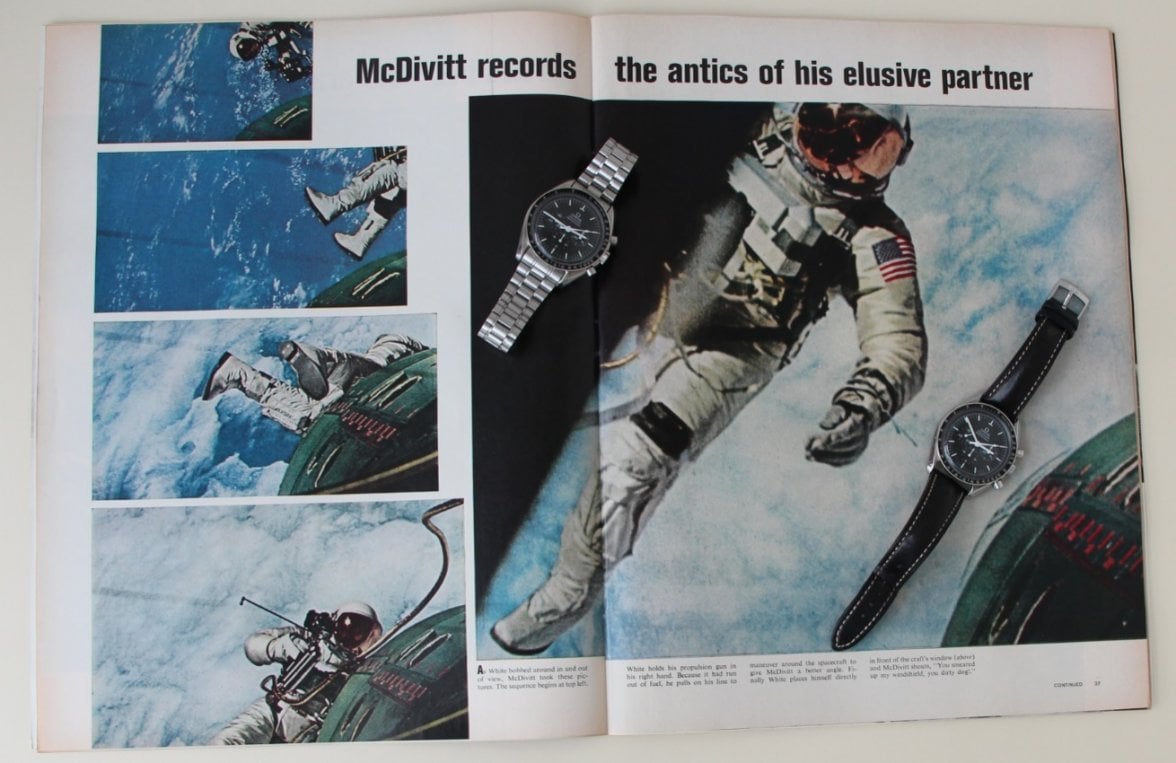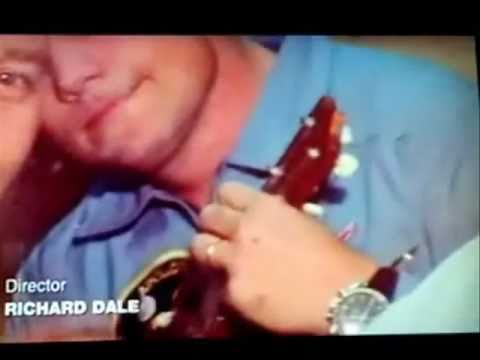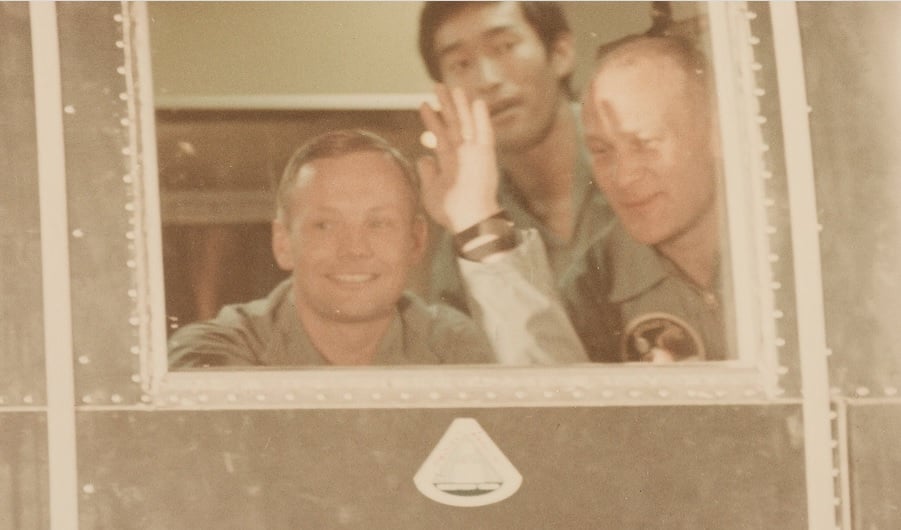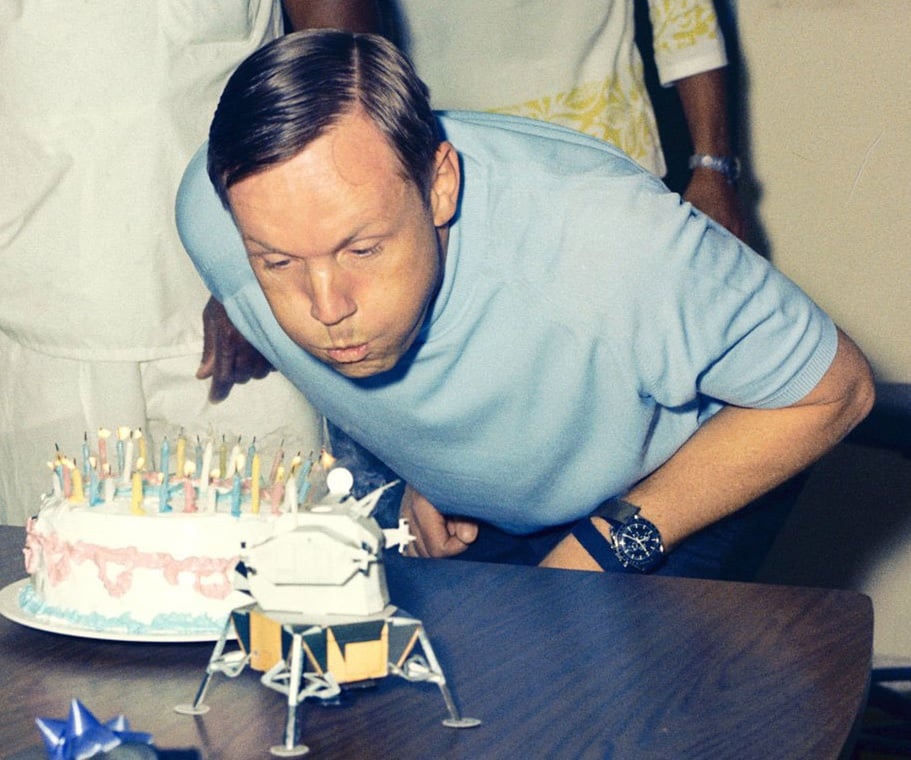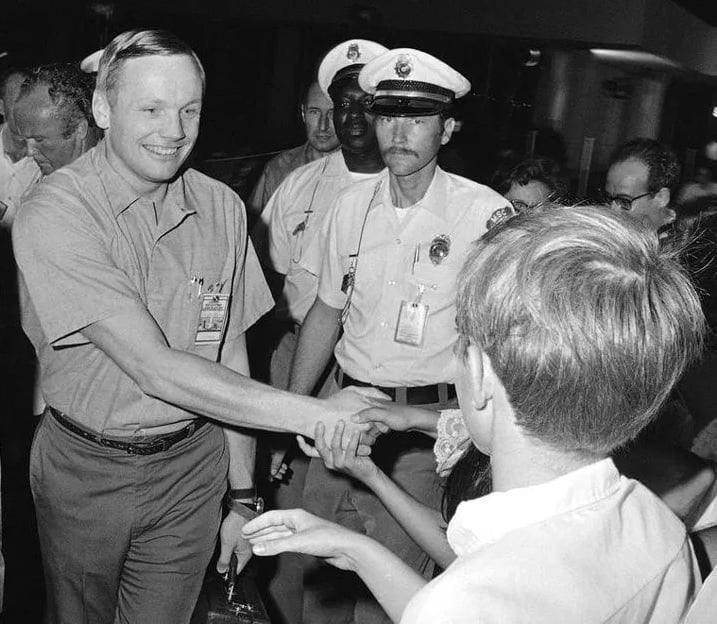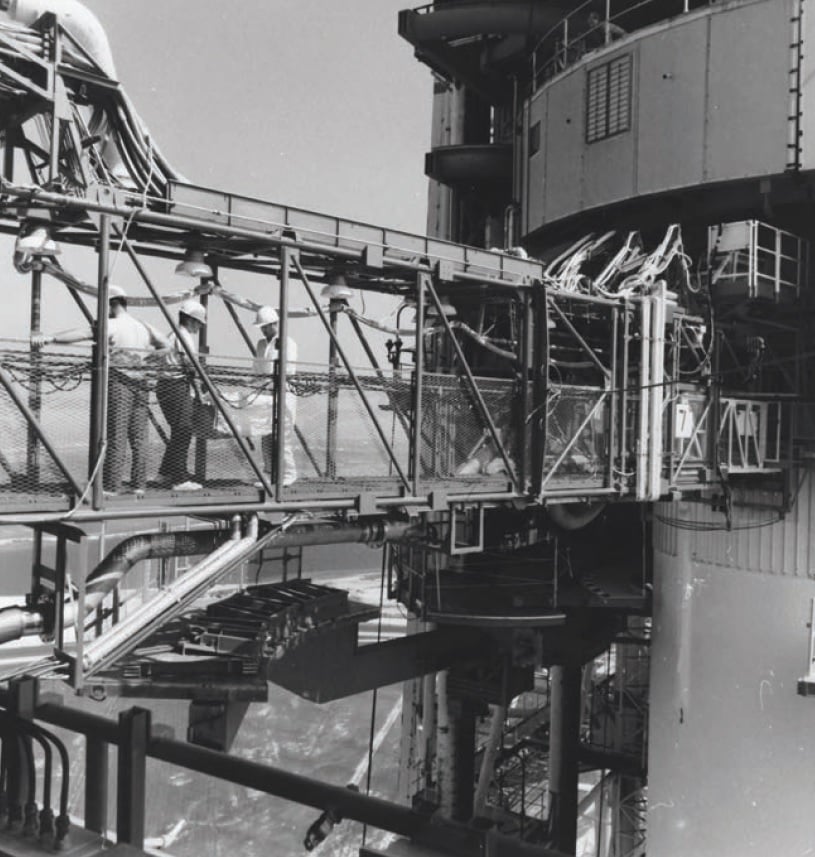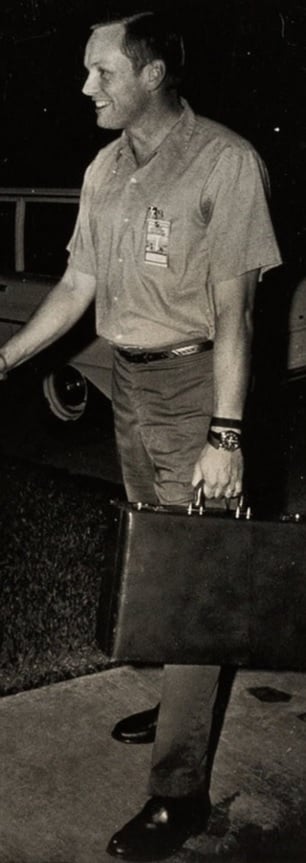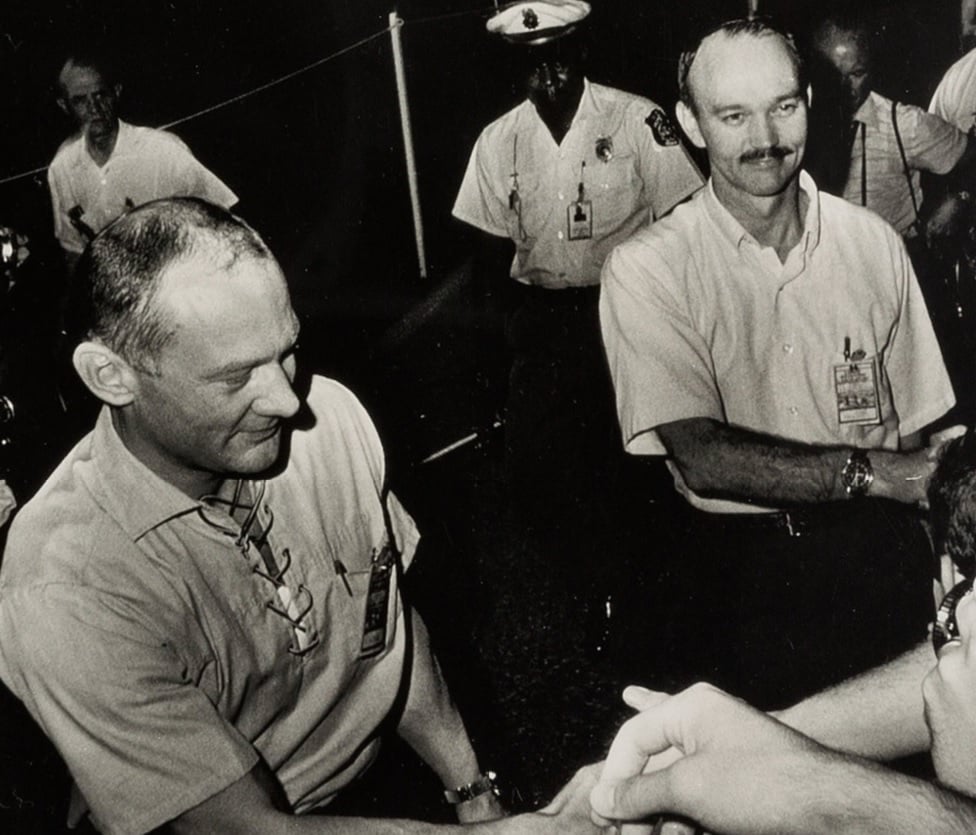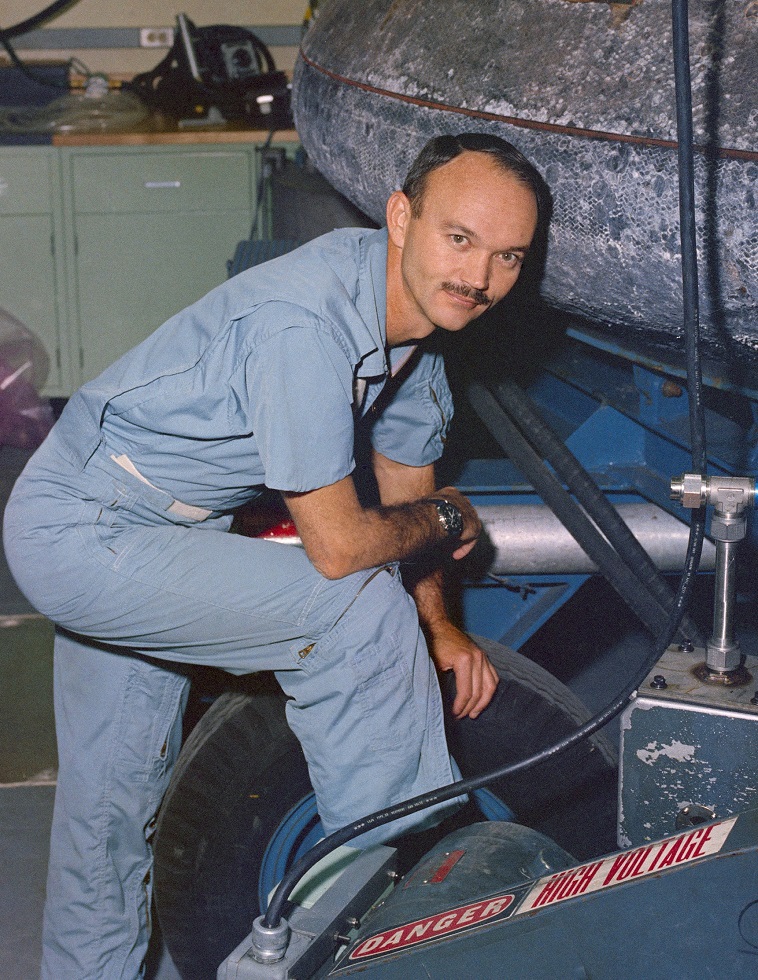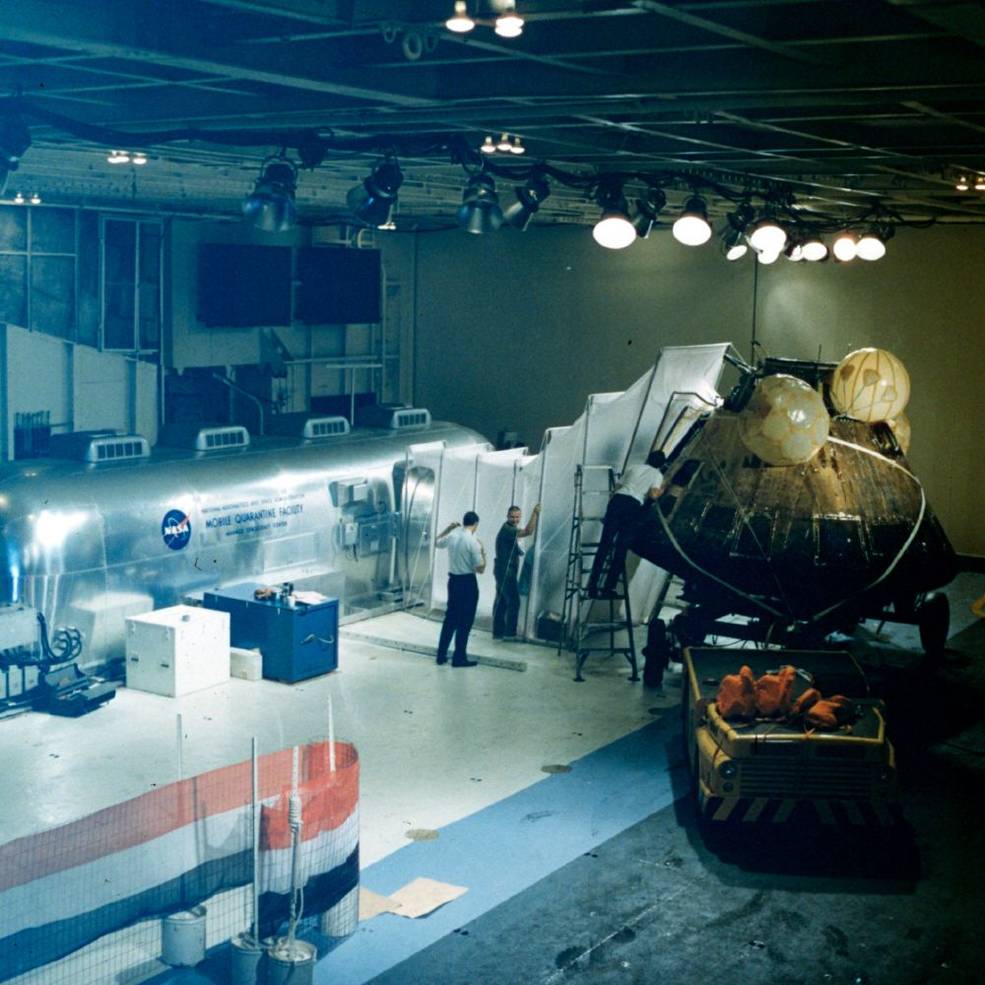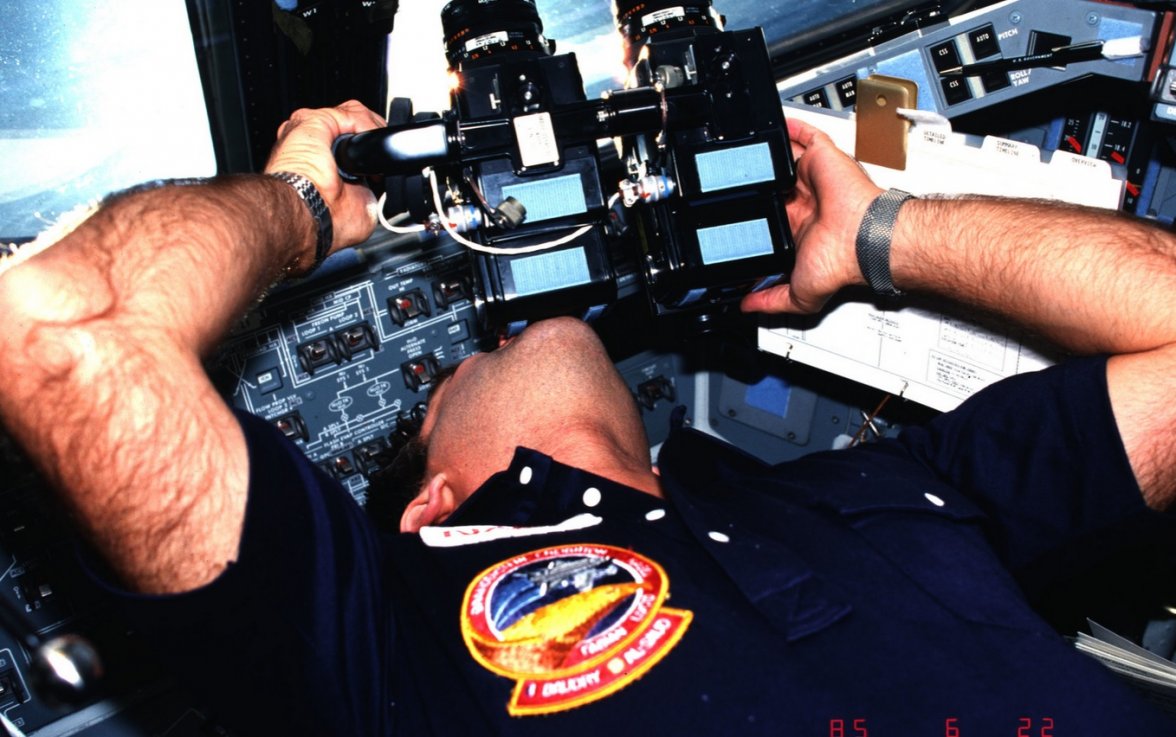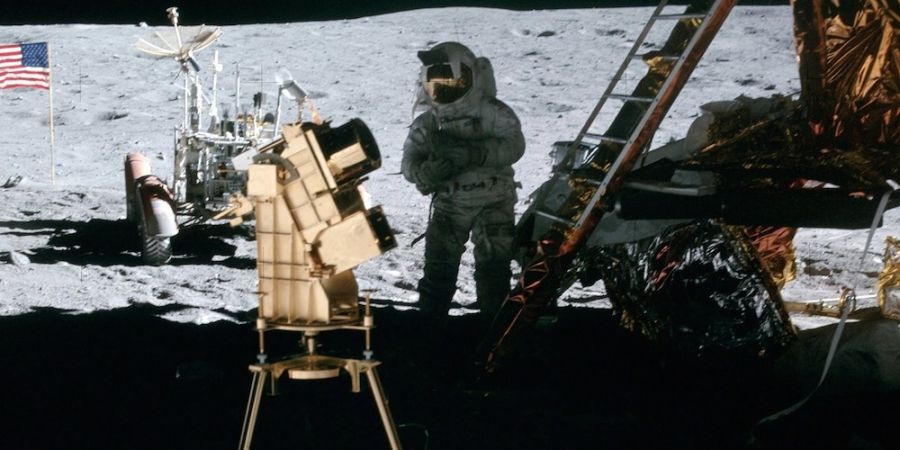Hidden gems from the NASA photo archive
SpeedyPhill
·Great to see the Apollo 11 Eagle in the mission patch of the ISS Expedition 60 crew: https://en.wikipedia.org/wiki/Expedition_60
SpaceCollectible
·Thanks ! browsing my nasa photo collection available on Space Collectibles, I found this picture of Apollo 11 - Neil Armstrong Plays Ukulele. And another picture of him with his watch ...

APOLLO 11 / Orig NASA 8x10 Press Photo - Neil Armstrong Plays Ukulele. Original vintage 1969 NASA issued 8x10 B&W press photo (on Kodak paper and not a re-print) showing Apollo 11 commander Neil Armstrong playing ukulele while in quarantine after mission to moon. Photo has original NASA caption on reverse.

APOLLO 11 / Orig NASA 8x10 Press Photo - Neil Armstrong Plays Ukulele. Original vintage 1969 NASA issued 8x10 B&W press photo (on Kodak paper and not a re-print) showing Apollo 11 commander Neil Armstrong playing ukulele while in quarantine after mission to moon. Photo has original NASA caption on reverse.
pnwyankee
·Did anybody watch the Apollo 11 movie on CNN Saturday night?
I was amazed at the quality of all the archived video footage
NASA sure had access to better stuff than the rest of us!
I was amazed at the quality of all the archived video footage
NASA sure had access to better stuff than the rest of us!
SpeedyPhill
·We all saw the images of the astronauts strolling over the launchtower walkway towards the huge Saturn V launch vehicle... but image all the engineers who had to carry heavy scientific equipment abourd lunar lander Eagle before lift-off... Here the Laser-Ranging Reflector is carried across the Apollo 11 walkway...
.
.
And because this is an Omega wristwatch forum, some more images from the Apollo 11 astronauts after leaving quarantaine... Take a note Aldrin and Collins already had another bracelet on their Speedmaster chronographs while Armstrong was still sporting the long black velcro strap...
.
.
.
And because this is an Omega wristwatch forum, some more images from the Apollo 11 astronauts after leaving quarantaine... Take a note Aldrin and Collins already had another bracelet on their Speedmaster chronographs while Armstrong was still sporting the long black velcro strap...
.
SpeedyPhill
·Apollo 11 Command Module Pilot Michael Collins spend the most time aboard CSM "Columbia" and was eager to check out the capsule as it arrived in the Lunar Receiving Laboaratory during quarantaine time. After August 1969, the capsule was returned to the North American Rockwell facilities in Downey California...
.
.
Jones in LA
··Not in LA anymore.Collins recently wrote a love letter to Columbia -- here's an excerpt:
"On the Big Day, with seven-and-a-half million pounds of thrust churning away beneath us, I feared for your fragility. But strong you were; you didn’t even pop a circuit breaker. You seemed to like leaving Earth better than sitting on the launch pad and were even smoother in space (well, except for Fuel Cell #3, but I did not consider it a failure, but simply a free spirit not to be regimented like #1 and #2)."
The entire letter can be found here:
https://www.nationalgeographic.com/...columbia-apollo-11-astronaut-michael-collins/
"On the Big Day, with seven-and-a-half million pounds of thrust churning away beneath us, I feared for your fragility. But strong you were; you didn’t even pop a circuit breaker. You seemed to like leaving Earth better than sitting on the launch pad and were even smoother in space (well, except for Fuel Cell #3, but I did not consider it a failure, but simply a free spirit not to be regimented like #1 and #2)."
The entire letter can be found here:
https://www.nationalgeographic.com/...columbia-apollo-11-astronaut-michael-collins/
TJH
·Collins recently wrote a love letter to Columbia -- here's an excerpt:
"On the Big Day, with seven-and-a-half million pounds of thrust churning away beneath us, I feared for your fragility. But strong you were; you didn’t even pop a circuit breaker. You seemed to like leaving Earth better than sitting on the launch pad and were even smoother in space (well, except for Fuel Cell #3, but I did not consider it a failure, but simply a free spirit not to be regimented like #1 and #2)."
The entire letter can be found here:
https://www.nationalgeographic.com/...columbia-apollo-11-astronaut-michael-collins/
He also wrote a tribute on the inside the CSM:
"Spacecraft 107 -- alias Apollo 11 -- alias Columbia. The best ship to come down the line. God Bless Her. Michael Collins, CMP."
https://history.nasa.gov/afj/ap11fj/cm-107_graffiti.html
Jones in LA
··Not in LA anymore.Yes, that graffiti is mentioned in the Nat Geo piece as well:
"While aboard the U.S.S. Hornet following Columbia's splashdown on July 24, 1969, astronaut Michael Collins crawled back into the command module and wrote this inscription on one of the equipment bay panels."
Which makes one wonder: exactly when could he have done that, considering the quarantine protocol that was in effect?
"While aboard the U.S.S. Hornet following Columbia's splashdown on July 24, 1969, astronaut Michael Collins crawled back into the command module and wrote this inscription on one of the equipment bay panels."
Which makes one wonder: exactly when could he have done that, considering the quarantine protocol that was in effect?
TJH
·Yes, that graffiti is mentioned in the Nat Geo piece as well:
"While aboard the U.S.S. Hornet following Columbia's splashdown on July 24, 1969, astronaut Michael Collins crawled back into the command module and wrote this inscription on one of the equipment bay panels."
Which makes one wonder: exactly when could he have done that, considering the quarantine protocol that was in effect?
There was a poly-tunnel connecting the Mobile Quarantine Facitily to the CSM so that the engineer (John Hirasaki) in residence in quarantine could decontaminate and make the CSM safe from excess propellants etc...
TJH
·There was a poly-tunnel connecting the Mobile Quarantine Facitily to the CSM so that the engineer (John Hirasaki) in residence in quarantine could decontaminate and make the CSM safe from excess propellants etc...
There's more on this fascinating topic here:
https://www.nasa.gov/feature/50-years-ago-hornet-3-the-recovery-of-apollo-11
https://www.nasa.gov/feature/50-years-ago-apollo-11-returns-to-houston
Jones in LA
··Not in LA anymore.There was a poly-tunnel connecting the Mobile Quarantine Facitily to the CSM so that the engineer (John Hirasaki) in residence in quarantine could decontaminate and make the CSM safe from excess propellants etc...
That makes for a plausible explanation of "how". Thanks.
Jones in LA
··Not in LA anymore.Jones in LA
··Not in LA anymore.
“As The Space Station Turns “
TIMElyBehaviour
·I’m a big fan of astronomy and the manned missions especially Apollo.
These photos are awesome thank you for sharing!!!
These photos are awesome thank you for sharing!!!
SpeedyPhill
·@TIMElyBehaviour
During manned spaceflight, some astronomy research has been done, ranging from science instruments on the X-15 rocket plane to putting a f 1.0 Schmidt telescope on the Moon during the Apollo 16 mission
.
During manned spaceflight, some astronomy research has been done, ranging from science instruments on the X-15 rocket plane to putting a f 1.0 Schmidt telescope on the Moon during the Apollo 16 mission
.
TIMElyBehaviour
·@TIMElyBehaviour
During manned spaceflight, some astronomy research has been done, ranging from science instruments on the X-15 rocket plane to putting a f 1.0 Schmidt telescope on the Moon during the Apollo 16 mission
.
Similar threads
- Posts
- 236
- Views
- 53K
